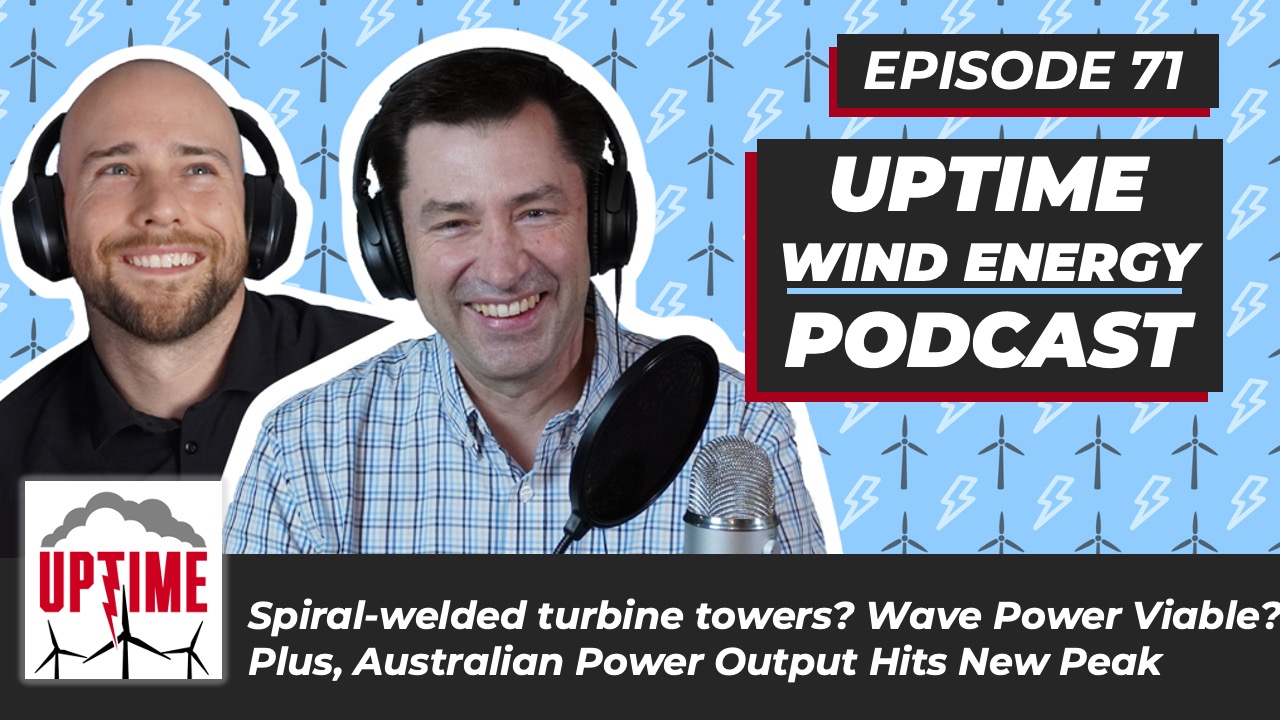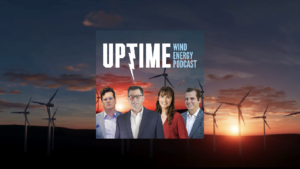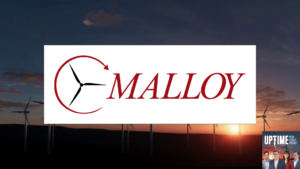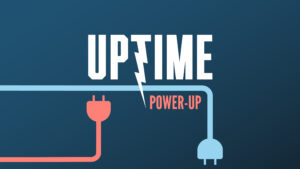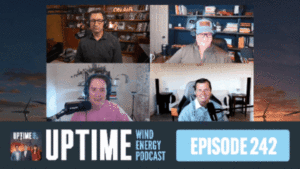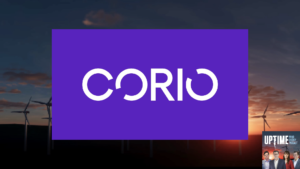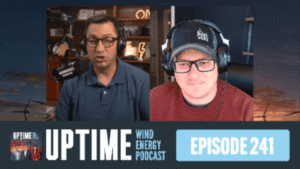This week, we discuss the proposed 7.9 billion dollars that are needed for port infrastructure improvements to accommodate the surge in offshore wind in Europe, Australia’s booming wind power and renewable output, a huge Australian hydrogen and ammonia plant proposal, Mocean Blue X wave energy technology and more.
Podcast: Play in new window | Download
Sign up now for Uptime Tech News, our weekly email update on all things wind technology. This episode is sponsored by Weather Guard Lightning tech. Learn more about Weather Guard’s StrikeTape Wind Turbine LPS retrofit. Follow the show on Facebook, YouTube, Twitter, Linkedin and visit Weather Guard on the web. Have a question we can answer on the show? Email us!
Australian Power Output Surgers; Mocean Wave Energy & Port Infrastructure
This episode is brought to you by weather
guard lightning tech at Weather Guard.
We make lightning protection easy.
If you’re wind turbines
or do for maintenance or repairs,
install our strike
tape retrofit LPS upgrade.
At the same time,
a strike tape installation is the quick,
easy solution that provides a dramatic,
long lasting boost to the factory
lightning protection system.
Forward thinking
wind site owners install strike tape today
to increase uptime tomorrow.
Learn more in the show
notes of today’s podcast.
Welcome back. I’m Allen Hall.
I’m Dan Blewett. And this is the uptime
podcast where we talk about wind energy
engineering, lightning protection and ways
to keep your wind turbines running.
All right, welcome back
to the Uptime Podcast.
I’m your co-host, Dan
Blewett on today’s show.
First, we’ll talk a little bit
about port infrastructure. Over in Europe.
It looks like about seven point nine
billion dollars is the estimate
of some upgrades that might be needed
just to handle some of
the increased volume of,
you know, shipping from offshore wind.
We’ll talk about spiral welded tower
technology, which could be a major player
as far as, you know, construction on site
without having to ship
these really long towers.
We’ll talk about the emotion borloo
X wave energy prototype,
which is now off the Orkney Islands
in testing phase.
And the U.S. is actually investing in that
to see if we can get
some of this wave power up
and running on the West Coast.
And lastly, we will talk about Australia
breaking an output,
a record with five thousand eight
hundred ninety nine megawatts.
And some of the while,
the plans for this very big energy hub
in the southwest side of Australia
to potentially create green hydrogen and
other fuels for use in heavy industries,
power stations, shipping and more.
So, Alan, let’s start with infrastructure.
Obviously, this is
this is was going to be a problem.
We’ve talked about this
just the need for bigger ships,
for installation
vehicles, for bigger ports
as these things grow
and there’s more demand for it,
like this is going to stress everything.
So, I mean, I assume you
you just see this as a natural progression
for all these countries
just to to make this work, right?
Oh, sure. Can can you.
Well, imagine that
if you have an existing port that
close in the 60s or 70s,
which is probably at least
in the United States, was
what a lot of ports are going to be.
All the infrastructure
you have to put in to make them viable,
to handle offshore wind,
it can be roads, right.
Heavy duty roads, a carry
heavy things for trucking, all the power
requirements, because you may
be putting factories near the ports.
So all the on the power
demand you’re going to put there,
all the other bits
and bobs of buildings.
You know, it’s just going to be massive
amounts of infrastructure,
sewer, water lines, the whole thing.
I always guess that when they come up
with numbers for infrastructure
projects, it’s roughly 50 percent of
what is actually needed to finish the job.
So they probably need twice that that
amount to do it, because it’s always so
intensive on labor and on materials
and with the with inflation right now,
you wouldn’t want to start it today,
but you need to start it pretty soon,
because you know
that this influx is coming
as it’s like building a small city
right on the port.
And one of the most
one of the more difficult places to build
a city is on a port
for a variety of reasons. Right.
I mean, the land may not be suitable
for heavy structures.
You may have to build it up. You’ve got to
deal with trying to get roads in and out.
And you’re there’s a lot of cities
near the, you know, the seashore.
So it’s not easy to do that.
And the cost to infrastructure has just
exploded in the last 10, 20 years.
I do you see this
as being a massive problem that as a
if if I’m JCJ or if I’m seamers Comesa,
I don’t want to pay for all that stuff.
Like I don’t want to put
all the sewer lines in for the
this whole up and down the port community
that needs to be built up.
I don’t want to pay for that.
You want the community to do it.
Well, in your we talked about how
it seems like the margins
might be relatively thin for some of the
the manufacturers like Gene
Simmons, Gamesa, where sure,
they might not have all that extra
cash. Again, I don’t know the the
the deep financials of it.
I’m not sure anyone really does.
Well, you work for those companies,
but you need to have our raw raw materials
increasing in price right now,
whether it’s fiberglass or concrete
or or especially steel.
And then you ask them to pay for it.
And I’m not sure that’s
what what’s being talked about here,
but someone’s got to pay
for it, obviously.
Right. And you wonder if it is the OEMs,
the manufacturers, so.
Well, it’s like a sports team
in the United States.
The sports teams
don’t want to buy the stadium
in which they’re going to produce
all the revenue from.
It’s this is not much different,
but it’s a much larger scale.
And as you know, in Washington, D.C., all
the development that happened around the
the Nationals baseball park,
there’s a lot of cash put in in that
Glenroe Square mile.
It’s going to be larger
than a square mile at all these ports
if they’re getting really serious
about offshore wind.
So it’s just it’s
a massive amount of money.
And how many times are you going
to replicate that along
the eastern seaboard of the United States?
Same thing’s going to happen in Europe.
How many times are you going
to replicate this thing
to make it close
to where the actual wind turbine site is?
Because you don’t want to haul anything
if you can avoid it.
So that’s why I think they’re up
by a factor of two.
Well, see, as far as it goes, but.
I don’t see GE pouring a lot of money
on infrastructure, I don’t see
Siemens Kemakeza doing it or Avesta,
so I don’t see any of them do it.
I see either the communities
are going to do it
or the national governments
are going to do it
if they want really want when to develop
in their particular area, Scotland.
So already doing some of those things
in the states. It could be New Jersey,
it could be Massachusetts.
Didn’t have enough
tax rolls to force that.
And maybe they get more jobs and it’ll pay
itself off over time, or maybe it won’t.
But don’t you see that as just being this
in the United States,
there will be a massive, massive
amount of infrastructure to be built,
something we haven’t probably done
since probably World War Two.
It’s going to be that big of an event.
If we’re talking about the numbers
we’re talking about,
it’s going to be a big one
if we want to prevent hurricanes.
We’re going to need 100000 turbines
in the Gulf of Mexico, remember? So
all the that if we want to cycle
that energy out of hurricanes
like those resources
we’re talking about. But I digress.
So Keystone Tower Systems is back
sort of in the news cycle
talking about spiral welded towers.
And, you know, interesting
to think of that technology as, you know,
being able to essentially
maybe transport a
roll of of steel and then
have some sort of device
that rolls it out
and robotically welds it on site.
Alan, it’s not clear how this is done, but
it’s a it’s a pretty interesting concept.
And I’m not sure if this is how,
you know, how prevalent these are
or if this is gained traction or where
Keystone is as far as these spiral towers.
Well, it looks like they’re putting
a demonstrator together or down in Texas,
because I think the company is based
in Denver, Colorado.
And the thought process
is that you can take a basically
a massive roll of steel or
some form of steel.
And like Dan was saying, just spirally
weld it and well, that
so you create a spiral tower that tapers,
but at the same time, you’re welding it
continuously all the way up
so that you bring in real steel
and you pump out
a tower out the back into your factory
that eliminates all the transportation
of tower segments
and then stacking those towers segments
out on the ocean or putting together
then and then dumping them
in the ocean, so to speak.
So it’s sort of a getting rid of all the
the transportation
and all the infrastructure
that’s needed to move this tower.
It can be done on site.
And I think the number they tossed out
was if you’re making 15 turbines,
putting a facility in
would pay for itself.
So it’s some sort of like put it in,
make all the turbines, take it down,
go to the next spot sort of event.
But most of the sites in
the United States are talking about
way more than 15 turbines.
So then then the economics play. Right.
And, you know, if you’re making 50 or 100
like they will in the United States,
then this spiral.
Well, the tower thing
could be an interesting development.
And don’t you see that
this is about the time where investment
groups will start to pick up on
and the amount of money
that’s going to be invested
on the northeast of the United States
in particular, and start
putting venture capital into a unique.
Probably very profitable.
Technology is that we’re going to just be
implemented up and down the coastline.
So say they built 50
of these different little
and that won’t be a little bit different.
Sporo welding tower factories
up and down the coastline.
That could be a great business.
And I think if we watch to see
who invests in how much they’re
investing in these technologies,
is it going to determine winners or losers
before we get to the time of building
off the offshore wind turbines?
But we’re going to see a lot more of this.
This is cool. I can’t.
Can you imagine, Dan? I mean,
you know how massive these towers are.
Can you imagine bending steel like that
and welding at the same time?
It seems like monumental kind
of massive structures to be playing with.
Yeah, well, it sounds like they secured
their first commercial order in 2019
from a major turbine OEM
and that in here in 2021,
this is where that full scale plan
is going to start to come to fruition.
And they’re hoping to do on site
in collaboration
with the Department of Energy in the U.S.
in 2023. Right. So it looks like they’re
going in the right direction.
And that I mean,
it is a really interesting concept.
And they also talk
about on their Web site that
in an ideal world,
the towers would be wider at the base.
And this allows them to be to be wider
at the base than they already are. Sure.
And that’s another interesting,
you know, just like,
you know, with Coba,
they talk about how
they can make a tower taller
because they can make the base
out of concrete and make it wider. Right.
So that base width problem
is actively trying to be solved
by Kobad with their 3D concrete
printing and actively
trying to be solved here
by Keystone Tower Systems. So.
Yeah. And it seems
like everyone’s figured this out
that let’s like you said, if it just only
takes 15 towers to pay for itself
and make it economically viable
to put that onsite
manufacturing plants,
then 15 towers is is enough.
And that’s the third
if if that of a typical U.S. wind site.
Now, maybe less so than Europe, where,
you know, in Europe, they’ll put a more
a single tower here in this town
or a couple here in this town.
But in the US, it seems to be
a pretty big, big projects,
you know, closer
to 100 than that 15. So, yeah.
So that’s interesting.
Definitely makes sense
and definitely fits that whole
that whole model that everyone’s
going to just do it all on site
and eliminate the transportation
problems just just in that.
And the next step and this is not win,
but this is just
part of this whole renewable
energy picture, is so the motion blur.
So there’s Emmo Ceann like amotion
motion, blue X wave energy prototype.
The U.S. is funding
some projects with this on.
When we have energy tech, they want to put
these out in the West Coast
to just start to
to go it to get things rolling.
The PAC of South Facility
was off the coast of Oregon.
And the DOWI is just trying to figure out
how they can advance
wave energy technology
and eventually get to,
you know, where they’re proven
and and viable commercially.
So they put the US DEWEES
But twenty seven million
of funding into research
and development for wave energy.
And of course, this company motion
is part of that.
So they’re blue wave ex
demonstrator is out there
or blue X wave demonstrators out there
in the Orkney Islands now.
And Allen, based on the photos
we’ve seen on this,
we haven’t seen a good video
or they explain like how it works,
how it actually produces power, but it’s
going to have a subsurface energy stores.
It looks like obviously
all the cabling and stuff like that.
Well, how does this thing produce power?
Well, it’s got a central pivot
and like two wings.
So it’s like a bird, so to speak.
And if you can picture this in your mind.
So it’s got this
sort of massive piece in the middle
and these two arms that float up and down
as the waves come through.
So one’s up, one’s down.
And these arms move
relative to the center pivot point.
The the way that it seems to work, it’s
sort of like a little bit of a ratchet
flywheel event where
it just kind of nudges some
spinning mass, which is then
connected to a turbine
and the generator to generate electricity.
So as the waves go up and down
against these two arms,
and there must be something
about the distance
in which the arms are set out
and the little look like scoops
on either end to maximize
the amount of displacement that they get.
So it’s like pumping out,
you know, like those little hand truck
things you saw in silent movies
or going down the train tracks.
And there’s one guy there on his side
and they’re pumping up and down
to make this little cart move.
It’s sort of like that.
That’s what it looks like.
It’s a similar technology
or similar mechanical approach to it.
So it’s generally
there’s interesting things
happening in in waves.
The question is, you know, how much energy
can you generate versus the cost. Right.
And is it going to be efficient?
I think that’s why the U.S.
is going to be involved in that,
to try to try to figure those things out
and off the coast of California,
particularly up in Oregon and Washington,
where the continental shelf drops off
and you’re have to talk about
floating devices.
Maybe wave technology is one of the things
you could easily tap into
because there’s plenty plenty of waves
off the Pacific Ocean,
and it’s always pretty constant.
So in theory, you can then
generate power day and night mostly,
you know, how handles rough seas.
And the whole thing
is yet to be determined.
But do you see how this how this could be
sort of advantageous and in the sense
that waves are always kind of going in,
even if they produce
a relatively low amount of energy,
at least at some
added to the grand total of wind and solar
and whatever else
we’re going to come up with.
Maybe it’s another piece. Yeah.
And that’s what is interesting is,
you know, we’ve talked about tidal power
in a previous episode.
There’s obviously
wind, there’s obviously solar.
Now there’s some wave energy and there is
no details about how much this output.
So I don’t know if it’s a megawatt
a kilowatt, you know, who knows?
There’s no no reporting on on
how much it produces.
But that’s obviously why
the Department of Energy is funding
research and development just to see
what we can pump out, I guess,
and what it’s eventually capable of. But.
Well, yeah, this feels like
this is going to be this interesting.
Like we’ve got these
huge mechanical creatures in the ocean,
like all over on the shore,
like just everywhere.
These are going to pond pond power saying
like, you know, there’s just something in
just a little floating,
like a little boat, just cruising
around, somehow harvesting
something like that, you know?
Yeah, I don’t know.
You know, the stream power.
Well, this unit, this
this wave unit is so massive
that they can actually fit
inside of it. Right.
So you can work inside of it.
That’s interesting, because. Yeah.
So if you’re sitting
inside the central piece and it’s bobbing
up and down and left and right and you’re
in this enclosed space, that’s like
your maximum seasickness kind of event.
We got to get hazardous duty
to be working inside of this unit
if it’s deployed.
That’s it’s interesting.
You know, I always hate to poo poo
a new piece of technology
in the sense that you’re not really sure
what, like you were saying,
how much energy it can produce.
Hopefully somebody has done
that because, you know,
because we’re talking about like
15 megawatt and 20 megawatt eventually
types of wind turbines, you can generate
a lot of power at a wind turbine.
How much can you
possibly generate off of waves?
That’s yet to be determined.
I know Paul Guy had mentioned something
that to us about
wave power has been around for a while
and it hasn’t really come to
anything massive yet.
But there’s different approaches to it.
And maybe this is one that will be
beneficial in some parts of the world
where there’s just constant waves, Alaska,
maybe one where there’s ice up there,
you know, what do you do with the ice?
So maybe you’re talking about
Washington state and down
the coastline as as you’re
your places where this could be developed,
but eventually it comes down
to levelized cost of energy.
What is it? And we haven’t
seen numbers yet,
so we’ll just have to keep our eye on it.
Well, moving on.
Australia is having a go at the moment.
They’re excited to report
that five thousand
eight hundred ninety
nine megawatts was churned out on Tuesday.
Of what day was this?
I guess Tuesday this week.
So that would have been July 19th
as they high output for the
for the country.
Now that South Australia
has a number of extra wind farms online
and constraints that
were previously capped have been relieved.
Things are just sort of
kicking and outputs quite high there.
So I expect this is just going to be
a trend of every country
that each day is almost
like a new record, right?
Yeah, it will be, especially as we add
more and more wind turbines.
These numbers are going to get dwarfed
and 10 years are going to look back
and say that’s nothing.
That’s the drop in the bucket.
Don’t you think that
if Australia goes after wind
like they probably should, that
these numbers are going to be tiny
and we’re not even going
to think of them
as being all that difficult to achieve?
So this is interesting, though.
I mean, they did make a big press
release about it.
I saw it in a different couple
of different sources I saw on LinkedIn.
I think I saw it on Twitter.
That’s good. People are paying
attention. That’s good.
If anything comes out of this right now
is people are paying attention
to how much energy wind is creating.
I don’t think anybody has a sense
of what it means yet, but they will.
And this is part of the general population
switching to electric power over time,
like what’s going to happen
in many parts of the world.
And it’s just going to be a different way
of generating power.
And we ought to celebrate those successes.
And this is something to celebrate.
So this is good.
This is really good.
One with more news from Australia
that there’s a consortium of
of companies that want to create the.
What would be the world’s biggest
renewable energy hub in Australia’s
southwest to convert wind
and solar power into green
fuels like hydrogen
supporting from the Guardian Ekom.
And so this energy, these energy companies
want a fifteen thousand
square kilometer area, 50 gigawatt
capacity cost, 100 billion dollars.
And they want to,
like I said, green hydrogen.
And essentially,
this is going to be very comparable
to the current capacity they have
for coal, gas and other renewable plants
currently in the energy market.
So my question to you, Allan, is why
green hydrogen and ammonia?
Like, what are those fuels important for?
Well, the ammonia is for fertilizer,
or at least it is in the United States.
And that’s a big industry in the states,
in the farming areas,
and then the hydrogen.
I think the thought is
that they’re going to take
large trucks and industrial equipment
and convert them from diesel to hydrogen.
There’s a big transition to make.
That’s not particularly easy to do.
But there was, at least when I recollect
the last time I dealt with Australia
a lot was when we were developing
a solar car back in college.
And the solar car race across
Australia was a big deal.
So you see all these
I think there are three trailers,
long trucks that ramble across Australia.
There must be a lot of trucking
because a lot of the the bigger
cities, obviously, are on the coastline.
And that’s a huge country.
So getting from one side to the other
is is a big deal.
And it must take
a lot of energy to do that.
Doing it with a cleaner energy
would make a lot of sense.
And I know Tesla, as we all know, Tesla’s
trying to develop a battery
powered truck ship.
Trucks to to help reduce emissions
and the whole thing.
I’m not sure hydrogen
is the way to go, though.
That’s that’s it.
The green hydrogen
thing is still a mystery to me in terms of
how real is it versus
the cost to generate it.
And Rosemary Barnes
did a really good job about this.
And one of her YouTube
videos talking about
it takes a lot of energy, is only like
30 percent of the energy use out of it.
So you put 100 percent of energy
to make it and you get 30 percent back
out of it. That’s
not a great return on investment.
And so is the battery
power a better solution? And
I don’t know if you watched one
of her recent videos, and I think this is
part of sort of the electrification
and new energy solutions in Australia.
But Rosemary was talking
about using electric vehicles to then
sort of provide stability to the grid,
because everybody’s
a significant portion of society
in Australia will at some point
have an electric vehicle or electric truck
or electric tractor trailer
if it’s plugged into the grid on times
where the grid can’t feed all the energy
from wind and solar, say at nighttime,
maybe there’s some feedback
from the cars and the trucks
back into the grid to stabilize the grid.
So this kind of let’s see this
a little bit of an eco structure
that will develop in Australia
I think is in a really interesting place
where it can do that now.
I know there’s a lot of infrastructure
already built, but it’s not so much like
the United States where the infrastructure
is aging and really hard to do
because we’ve sort of developed
on the East Coast so much.
There’s a lot of Australia that’s still
open and for development, so to speak.
So this is going to be
interesting to watch.
And the hope is, is that
the United Kingdom, European Union,
different parts of the world, Australia
are going to try different different types
of energy production and to support
their electricity and energy needs.
And let’s see who the winner is. Don’t
you see that’s been
a better solution
and everybody doing the same thing.
The variability helps here.
Yeah, I would agree.
And of course, this is, you know,
like we know Boeing and Airbus have some
I think they’re pretty much back
burner at the moment.
But they’ve been tinkering
with hydrogen planes. Right.
And they’re trying to develop other
technology and see what that looks like.
As you know, some of these countries
want that to happen to
to eliminate the jet
fuel emissions from the atmosphere.
But they’re good, what, 20 years away?
Thirty years away from that
making that happen.
I wonder if not. Yeah. Yeah.
Yeah. And so maybe to get started
now, there could be enough
cheap enough hydrogen fuel
or that’s getting going.
Whereas I know we’ve had to play
catch up with wind and a lot of places
where, hey, if we’d done we’ve been we’d
invested in this five, 10 years ago,
maybe we’d be closer.
We wouldn’t have
some of these problems, you know.
It’s always looking
back at what we could have done.
But this seems like pretty forward
thinking potentially,
where there might not be as strong of a
of a demand for these fuels now.
But maybe in just a couple of years,
maybe there really would be very likely,
very, very likely one in the consortium
so that they expect the market
for green hydrogen globally to be 50
trillion by 2050 dollars.
Yeah, 50 trillion us really now.
That’s a really round number.
Anytime you see really real numbers,
like maybe it was like 48 million
with Ligaya Guy. Let’s just call it 50.
But it’s a very round number sumps.
I’m skeptical of it.
Highly skeptical. But, you know,
you make these predictions. Well, yeah.
What’s the combined economy, GDP of Europe
and the United States together?
That doesn’t approach that.
I don’t think that’s a big number.
That’s that’s a really
big number of trillions.
So a lot of trillions. Yeah.
So a lot of zeros there, huh? Hmm.
Maybe twenty nine years.
Twenty nine years in the future.
So we might be conquered by apes by then,
like we know, not like,
you know, dinosaurs, maybe back.
I just think of all the small business
pitches that go the market’s 50 trillion.
And if I get one percent of that,
that would be 500 billion.
And we all be rich. Right.
And yeah, no, that
isn’t how it works. But,
you know, what’s
that number it gets out there?
There’s going to be
some conference room where someone’s
skipping a pitch and it’s
going to go exactly like that. Wow.
Wow. Hmm. But but good, good things
happening in Australia for sure.
Really making. Yeah.
Making some moves and seeing their
their output of renewable energy,
you know, continue to continue to rise.
So that’s it for today’s
episode of the Uptime Wind Energy Podcast.
Thanks for listening.
Be sure to subscribe to the show and
check out the show notes or description.
If you’re here on YouTube
for uptime tech news,
where you can sign up
for our new newsletter
just to get a notification
of the new podcast.
Other wind tech articles
from around the Web videos,
whatever we find
that we want to share that we.
Feel like will keep you up to date
with what’s happening in the industry. So
thanks you for watching or for listening,
and we’ll see you next week on uptime.
Operating a profitable wind farm
is all about mitigating costs,
minimizing risks and being efficient
with maintenance, repairs and upgrades.
It’s incredibly expensive
to send a team of rope access
technicians up tower
to make even simple repairs.
We also know how costly lightning damage
can be requiring
inspection, repairs and downtime
for even minor lightning strikes.
Maximize the time efficiency of your techs
and prevent future lightning damage
by installing our strike tape
loops upgrade the next time
your crews are going up on ropes.
Learn more in today’s show notes or visit
us on the Web at Weather Guard Wind.COM.



